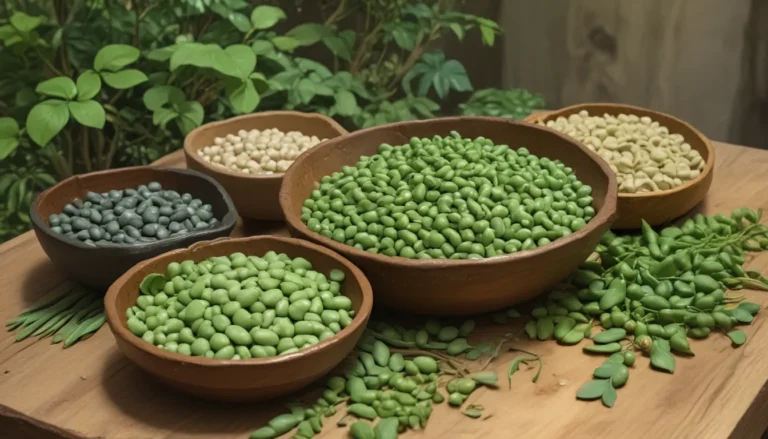Ultimate Guide to Growing Citrus Basil: How to Grow, Harvest, and Cook with these Flavorful Herbs

Are you looking to add a zesty twist to your cooking with the delightful flavors of citrus basil? From adding a tangy punch to Caprese salads to garnishing sweet lemonade, this herb is a versatile addition to any garden and kitchen.
In this comprehensive guide, we’ll dive into what makes citrus basil unique, how to grow and propagate it successfully, tips for harvesting, where to buy seeds, and delicious cooking ideas to make the most of this flavorful herb.
What Is Citrus Basil?
Citrus basil, a member of the Ocimum genus and the mint family, is known for its sweet-tart leaves and citrus-scented blooms. With variations that range from lemon to lime flavors, these herbs are a popular choice for grilling, Mediterranean and Asian dishes, fish, and even citrus sorbets.
While the exact taxonomic classification of citrus basil varieties can be debated, the important thing to remember is the delightful flavors they offer and how they can enhance your culinary creations.
Propagation
Growing citrus basil is similar to cultivating other basil varieties. Whether you choose to start from seeds or cuttings, providing optimal conditions such as well-draining soil, sunlight, and regular watering is key to successful propagation.
Consider starting seeds indoors to give them a head start before transplanting them outdoors once the danger of frost has passed. Biodegradable seed-starting cells are a great eco-friendly option to avoid disturbing the plant’s roots during transplanting.
How to Grow
For a bountiful harvest of citrus basil leaves, plant your herbs in full sun with organically-rich and well-draining soil. Mulching around the root zone and monitoring watering needs are essential to keep these plants healthy and thriving. Consider using a balanced fertilizer monthly during the growing season to encourage vigorous growth.
Growing Tips
- Choose a location with full sun to part shade.
- Ensure the soil is organically-rich and well-draining.
- Provide plants with an inch of water per week, in the absence of rain.
Where to Buy
Citrus basil plants may not always be readily available at local nurseries, but seeds can be purchased online. Look for lemon or lime basil varieties to get started on your herb garden. Check popular suppliers like Botanical Interests and Burpee for a variety of citrus basil seeds.
Harvesting
To encourage bushy growth and prevent bitterness in the leaves, regularly harvest your citrus basil plants by snipping the tips. This will also discourage flowering and ensure a fresh supply of flavorful leaves for your culinary creations.
Recipes and Cooking Ideas
The tangy, citrusy flavor of these herbs can elevate both sweet and savory dishes. From replacing sweet basil in pesto recipes to adding a refreshing twist to lemon sorbet, the possibilities are endless.
Experiment with citrus basil in recipes like vegan pesto, orzo pasta salad, and honey basil creamsicles to discover new flavors and aromas that this versatile herb can offer.
Quick Reference Growing Guide
- Plant Type: Perennial herb, grown as an annual
- Water Needs: Moderate
- Native to: Asia
- Tolerance: Moist soil
- Hardiness (USDA Zone): 4-9a (annual), 9b-11 (perennial)
- Maintenance: Low
- Season: Summer
- Soil Type: Organically rich, loamy
- Exposure: Full sun
- Soil pH: 6.0-7.5
- Time to Maturity: 40-70 days
- Soil Drainage: Well-draining
- Spacing: 6-12 inches
- Companion Planting: Cilantro, chamomile, chives, marigolds, parsley
- Planting Depth: 1/4 inch (seeds)
- Avoid Planting With: Bay, rosemary, sage
- Height: 8-30 inches
- Family: Lamiaceae
- Spread: 6-12 inches
- Genus: Ocimum
- Common Pests and Disease: Aphids, Japanese beetles, slugs, snails; damping off, fusarium wilt
- Species: Africanum, americanum, basilicum, x citriodorum
A Plant with No-Squeeze Citrus Basil Flavor
In addition to their culinary value, citrus basil plants add a delightful aroma to your garden and attract beneficial pollinators. Whether you’re a seasoned herb gardener or a beginner, experimenting with different citrus basil varieties can add a fresh twist to your cooking.
Share your favorite citrus basil variety or cooking tips in the comments below, and get inspired to explore more herb-growing guides to enhance your culinary creations.
Remember, when life gives you citrus basil, make delicious dishes!
For additional information and inspiration:
– Check out our guide on How to Plant and Grow Genovese Basil
– Learn How to Propagate Basil from Seed
– Discover Tips for Keeping Basil During Fall and Winter
Photos by Meghan Yager and Raquel Smith.





